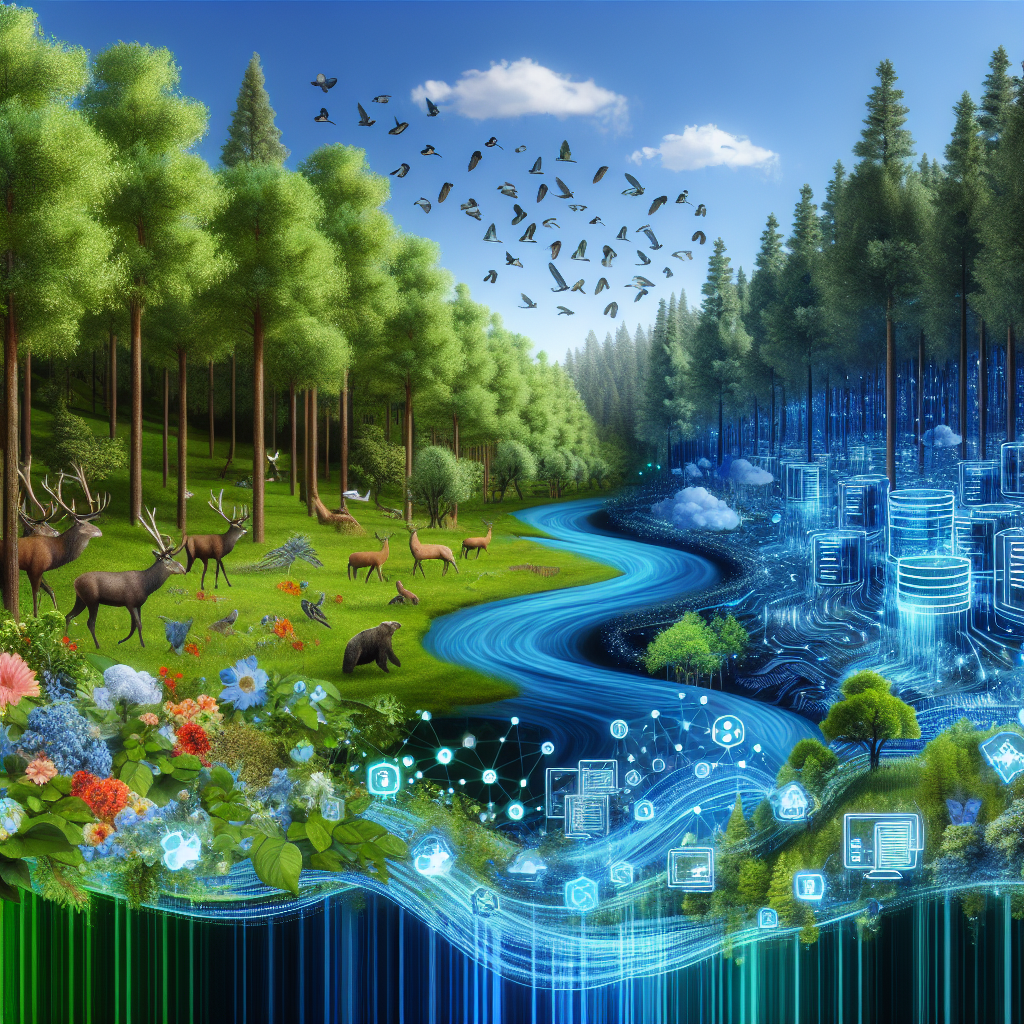In recent years, the rise of big data has revolutionized countless industries, from healthcare to finance to marketing. But one area that has seen significant potential for leveraging big data is environmental conservation. By harnessing the power of big data analytics, researchers and conservationists can make more informed decisions, track environmental changes, and ultimately work towards a more sustainable future for our planet.
Big data refers to the vast amount of information that is generated every day from a variety of sources, including sensors, social media, satellites, and more. This data can be used to monitor and analyze environmental trends, predict future changes, and identify areas in need of conservation efforts. By utilizing big data, conservationists can gain valuable insights into the health of ecosystems, the impact of human activities on the environment, and the effectiveness of conservation strategies.
One key way in which big data is being used for environmental conservation is through the monitoring of wildlife populations. By analyzing data from satellite imagery, GPS tracking devices, and other sources, researchers can track the movements and behaviors of endangered species, identify areas of high biodiversity, and assess the impact of climate change on wildlife habitats. This information can then be used to develop targeted conservation strategies to protect vulnerable species and their habitats.
In addition to monitoring wildlife populations, big data is also being used to track and combat illegal poaching and deforestation. By analyzing data from satellite imagery and other sources, conservationists can identify patterns of illegal activity, track the movement of poachers and loggers, and take action to stop these activities before they cause irreparable harm to the environment. This data-driven approach has proven to be highly effective in combating illegal wildlife trafficking and protecting endangered species.
Another important application of big data in environmental conservation is in the monitoring of air and water quality. By collecting and analyzing data from sensors and other sources, researchers can track pollution levels, identify sources of contamination, and develop strategies to improve air and water quality. This information is crucial for protecting human health and the environment, as well as for informing policy decisions and regulations aimed at reducing pollution and preserving natural resources.
One example of how big data is being used to monitor air and water quality is through the use of sensor networks. These networks consist of a series of sensors placed in various locations to collect data on air and water pollution levels. By analyzing this data in real-time, researchers can identify pollution hotspots, track the movement of pollutants, and take proactive measures to reduce pollution levels and protect public health.
Overall, the use of big data in environmental conservation has the potential to revolutionize the way we approach conservation efforts and address environmental challenges. By harnessing the power of big data analytics, researchers and conservationists can make more informed decisions, track environmental changes, and develop effective strategies to protect the planet for future generations.
FAQs:
1. How is big data collected for environmental conservation purposes?
Big data for environmental conservation is collected from a variety of sources, including satellite imagery, GPS tracking devices, sensors, social media, and more. This data is then analyzed using advanced analytics tools to gain valuable insights into environmental trends and changes.
2. What are some examples of how big data is being used for wildlife conservation?
Big data is being used for wildlife conservation in a number of ways, including monitoring wildlife populations, tracking illegal poaching and deforestation, and assessing the impact of climate change on habitats. This information is crucial for developing targeted conservation strategies to protect endangered species and their habitats.
3. How can big data help in monitoring air and water quality?
Big data can help in monitoring air and water quality by collecting and analyzing data from sensors and other sources to track pollution levels, identify sources of contamination, and develop strategies to improve air and water quality. This information is vital for protecting human health and the environment.
4. What are some challenges associated with leveraging big data for environmental conservation?
Some challenges associated with leveraging big data for environmental conservation include data privacy concerns, data security issues, and the need for advanced analytics skills. Additionally, ensuring the accuracy and reliability of the data collected can be a challenge for conservationists.
5. What are some future trends in the use of big data for environmental conservation?
Some future trends in the use of big data for environmental conservation include the development of more advanced analytics tools, the use of artificial intelligence and machine learning algorithms, and the integration of data from multiple sources to gain a more comprehensive understanding of environmental trends and changes.

